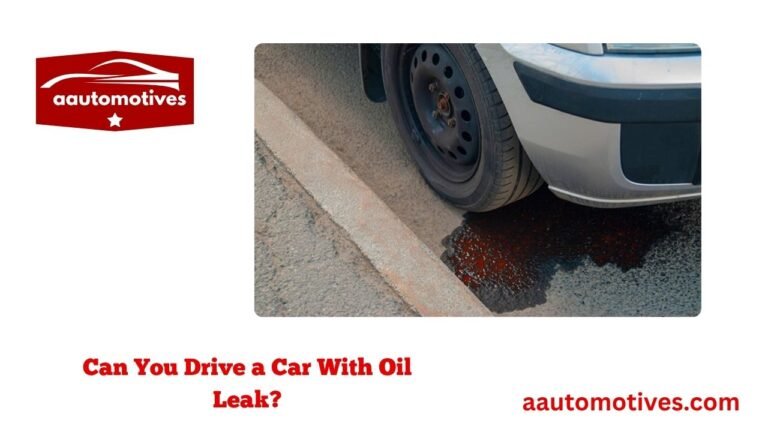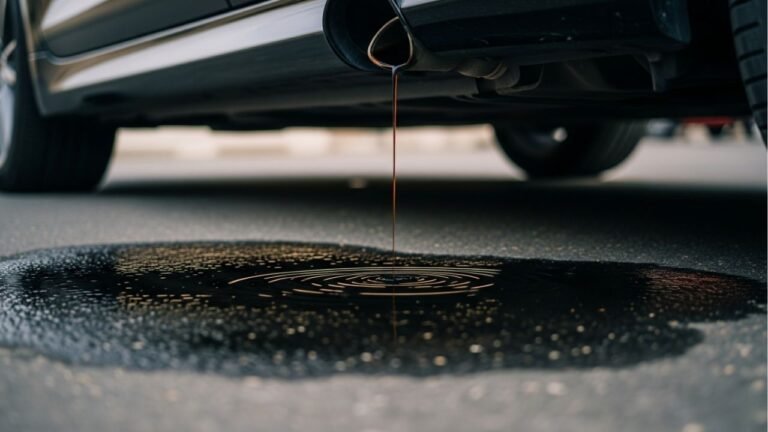Can You Use Car Oil on a Bike Chain?

Ever stood in your garage, holding a dusty bottle of car oil, staring at your squeaky bike chain, and thought, “Hmm… this might work?” Don’t worry—you’re not alone. We’ve all been there. When your chain starts making that annoying creaking sound, and you’re out of bike chain lube, it’s tempting to grab the nearest oil.
But can you use car oil on a bike chain safely?
It’s a common question, especially among casual riders, budget bikers, or DIY lovers. After all, both bike chains and car engines need lubrication. So, why not use the same stuff?
Well, the answer isn’t as simple as a yes or no. Let’s ride through it together—with stories, facts, comparisons, and a little heart-to-heart advice from one rider to another.
The Real Purpose of Bike Chain Lubricant
Before we dive into car oil, let’s first understand what bike chain lube actually does. You might think it just keeps the chain from squeaking, but its job goes way beyond that.
What does bike lube really do?
- Reduces friction between chain links and gears
- Protects against rust and corrosion
- Repels dirt and grime (especially dry lubes)
- Improves gear shifting smoothness
- Increases chain lifespan
Most commercial bike lubes are engineered specifically for bike chains. That means they have the right viscosity, additives, and cleaning properties tailored to cycling.
When you’re cycling through mud, rain, or dry dust, your lube needs to match those conditions. Bike lubes come in different types like dry, wet, ceramic, wax-based, and more—each suited for particular terrain.
Now ask yourself: Was car oil designed for this? Not exactly.
What Is Car Oil Made For?
Car engine oil is crafted for engines. That means it’s thicker, stickier, and loaded with detergents, dispersants, anti-foaming agents, and chemicals designed to work under high pressure and heat.
In simple terms: it’s like using heavy-duty cooking oil on a sandwich. Might keep it from sticking—but it’s not going to taste right.
Car oil is designed to:
- Withstand extreme heat
- Circulate at high speed
- Trap and clean engine dirt
- Lubricate pistons and moving engine parts
Sounds impressive, right? But here’s the twist—it’s also too thick and heavy for a delicate bike chain system.
So, Can You Use Car Oil on a Bike Chain?
Technically, yes—you can use car oil on a bike chain. But should you?
Let’s break it down.
| Criteria | Car Engine Oil | Bike Chain Lube |
|---|---|---|
| Viscosity | Thick | Thin/medium |
| Dust Attraction | High | Low (dry lubes) |
| Cleaning Required | Often | Minimal (depending) |
| Chain Protection | Short-term | Long-term |
| Cost-Effective? | Maybe (initially) | Yes (saves chain wear) |
| Weather Suitability | Poor in wet/dusty areas | Specialized for weather |
If you’re in a pinch, using a drop or two of car oil on your bike chain won’t ruin it immediately. But over time, it can attract gunk, collect grime, and wear your drivetrain faster than you’d like.
Let me tell you from experience—I tried this in college. Too broke for lube, I grabbed a bit of 10W-30 from my uncle’s car kit and slathered it on my chain. At first? Smooth ride. Two weeks later? Chain clogged with black goo and a greasy pant leg to match. Lesson learned the dirty way.
Why Car Oil Isn’t the Best Idea (Especially Long-Term)
Now let’s talk consequences. Because every decision has them—especially in bike maintenance.
1. Too Thick for Precision Movement
Car oil is heavy. On an engine, that’s perfect. But for a bike chain, it’s overkill. Your derailleur, cassette, and chainrings are finely tuned. Using thick oil slows everything down.
Your pedals feel sticky. Gear shifts get sluggish. Not fun.
2. Magnet for Dirt
Car oil collects dirt like a magnet. Road grime, sand, and dust stick to it like glue. Within days, your shiny chain turns into a muddy mess. That gunk acts like sandpaper, grinding your chain down with every pedal.
3. Hard to Clean
Wiping off car oil isn’t as simple as a quick rag swipe. You’ll need degreasers, brushes, and a ton of elbow grease. It’s not the low-maintenance shortcut it seems to be.
4. Messy for You and Your Clothes
This one’s personal. I once rode to a friend’s wedding with freshly “lubed” jeans—by that, I mean my greasy chain left a beautiful black tattoo up my calf. Charming, right?
When It Might Be Okay to Use Car Oil
Alright, let’s be fair. Not everyone bikes through the Alps or races every weekend. If you’re using an old commuter bike or a rusted mountain bike for quick grocery trips, using a tiny amount of car oil might get you through a tough spot.
Here’s when it might be okay:
- Emergency situations where you don’t have proper lube
- Short-distance, occasional rides on clean roads
- Dry climates where dirt attraction is minimal
Even then, use it sparingly, and clean your chain often. Wipe off any excess oil immediately. You don’t want it dripping onto your brakes or tires.
Better Alternatives You Already Have at Home
Now, if you’re out of bike lube, don’t panic. There are better alternatives than car oil—and you probably already have them.
Household Alternatives to Bike Chain Lube:
- 3-in-1 Oil: Lightweight, multi-purpose, and better than motor oil.
- WD-40: Not a true lubricant, but works as a cleaner in a pinch.
- Chain-Specific Oils: Even motorcycle chain lube is closer to what your bike needs.
- Teflon-Based Sprays: Found in tool kits and works well on moving parts.
- Cooking Oil (only VERY short term): Olive or canola oil can be used if you’re desperate—but it goes rancid fast.
Still, nothing beats a real bike-specific chain lubricant for performance, cleanliness, and long-term care.
How to Properly Lubricate a Bike Chain (Quick Guide)
Here’s a simple step-by-step on how to lube your chain right—whether you’re using bike lube or emergency car oil.
- Clean the chain using a degreaser and rag (or old toothbrush).
- Dry it thoroughly.
- Apply a small drop of oil to each link (not the entire chain at once).
- Rotate the pedals backward to help it spread.
- Wipe off the excess with a clean cloth. Too much oil attracts dirt.
Tip: Lubing is not about soaking—it’s about coating. Less is more.
Bullet Recap: Pros & Cons of Using Car Oil on Bike Chains
Pros (In Emergencies)
- Readily available in garages
- Cheap or free
- Better than no lube in dry weather
Cons (Most Situations)
- Too thick for chains
- Attracts dirt and grime
- Messy and hard to clean
- Wears parts faster
- Not weather-appropriate
Real-Life Rider Story: From Grease to Glory
A buddy of mine, Rajib, rides his rusty old bike through the busy streets of Dhaka every day. One rainy morning, he used leftover engine oil on his chain because the rain had washed off the lube. A week later? Chain locked mid-pedal in traffic. He ended up walking two miles, soaked and annoyed.
Moral of the story? Car oil’s not worth the hassle if you’re using your bike regularly. Invest in proper lube—it’s cheaper than a new chain or a ruined commute.
Car Oil vs. Bike Lube: The Ultimate Breakdown
Here’s a more detailed comparison for riders who love the specs:
| Feature | Car Engine Oil | Bike Chain Lube |
|---|---|---|
| Designed For | Engines | Bicycle chains |
| Viscosity | High (thick) | Medium to low |
| Weather Suitability | Poor (attracts dust/rust) | Specialized (dry, wet, ceramic) |
| Cleaning Effort | High | Low to moderate |
| Friction Control | Poor for bike chains | Excellent |
| Chain Life Impact | Reduces lifespan | Extends lifespan |
| Ease of Use | Messy | Easy, clean, efficient |
| Long-Term Use | Not recommended | Highly recommended |
| Cost Efficiency | False economy (wear cost adds up) | Worth the investment |
Expert Insight: What Mechanics Say
I once asked a local mechanic who worked in a Dhaka cycle repair shop—he’s been fixing bikes for over 20 years. He smiled and said, “I see people ruin a good Shimano chain with car oil every week. They think it saves money. But next month, they’re back with a jammed gear or rusted link. Cheaper to buy chain lube once than fix your drivetrain twice.”
Even bike shop pros agree: car oil is not meant for your chain. It may feel like a smart DIY trick, but in reality, it’s like putting diesel in a petrol car. It works—until it doesn’t.
Weather and Environment: A Key Consideration
Using the wrong oil is bad enough. But if you ride in humid, rainy, or dusty conditions, using car oil on your bike chain can make things worse. In rainy weather, thick oil creates a sticky paste that traps grit. In dry weather, it collects fine dust and makes the chain sound gritty and crunchy.
If you’re in a tropical place like Bangladesh or parts of India, where monsoon seasons are real, your chain deserves proper weather-resistant bike lube—or it’ll rust fast.
Pro Tip: Maintenance Over Money
Think of bike chain lube as skincare for your ride. It’s not just about shine—it’s about health. Would you wash your face with engine oil just because it’s slippery? Probably not.
Your bike’s drivetrain is its heart. The cleaner and smoother it runs, the more enjoyable your rides. Investing in a small bottle of chain lube (usually under $10) saves you hundreds on chain, cassette, and gear replacements.
Spend a little now to save a lot later.
Frequently Asked Questions (FAQs)
1. Can you use car oil on a bike chain in an emergency?
Yes, in a pinch, using a tiny amount of car oil can be better than running your bike dry. But make sure to clean the chain afterward and don’t use it as a long-term solution.
2. What happens if you use car oil regularly on your bike chain?
Over time, it attracts dirt and dust, thickens into sticky grime, wears down your chain and cassette, and causes messy buildup. You’ll spend more time cleaning than riding.
3. Is used car oil safe for bike chains?
Absolutely not. Used motor oil contains metal particles, engine by-products, and acidic residues that are harmful to bike components. Avoid it at all costs—it’s also bad for the environment.
4. Can car oil damage the bike’s cassette or derailleur?
Yes, indirectly. As grime builds up from thick oil, it affects the smooth movement of your chain. This friction wears down the cassette teeth and derailleur springs faster than usual.
5. Can synthetic motor oil be better than regular car oil for bike chains?
While synthetic oil has better properties, it’s still not ideal for bikes. It’s too viscous and designed for internal engine pressure—not exposed, moving chains.
6. Will car oil ruin my brakes if it drips onto them?
Yes. If car oil gets on your disc brakes or rim brake surfaces, it reduces braking power drastically. Always wipe off any excess oil and keep the chain area clean.
7. What’s the best alternative to bike chain lube if I don’t have any?
Try 3-in-1 oil or light machine oil. Even candle wax or Teflon sprays in small amounts work better than motor oil. Use them carefully and clean your chain after the ride.
8. How often should I lubricate my bike chain?
Generally, every 100–150 km for dry weather or after every wet ride. If you hear squeaking or shifting feels rough, it’s time to lube again.
Final Verdict: Should You Use Car Oil on a Bike Chain?
So, after this ride through facts, stories, comparisons, and laughs—what’s the final word?
Can you use car oil on a bike chain?
Yes—but only as a last resort.
Should you?
Not if you care about performance, cleanliness, and long-term savings.
Think of car oil like using sandpaper to exfoliate your skin—it technically works, but it’ll hurt you in the long run. On the other hand, bike-specific chain lube is like a gentle, effective moisturizer—it keeps your chain healthy, fast, and smooth.
In the end, your bike deserves the right care, just like you deserve a hassle-free, joyful ride.
Final Thoughts: A Personal Note
I’ve had chains fall off mid-hill. I’ve pedaled through sticky mud. I’ve ruined jeans with greasy chain marks. And every single time I’ve used the wrong oil, I’ve regretted it.
But I’ve also felt the freedom of a smooth, quiet ride at sunset, where the only thing you hear is the wind in your ears. That feeling? It’s worth doing it right.
So, treat your bike the way you’d treat a good friend—with care, patience, and the right tools. It’ll carry you farther than you ever imagined.






